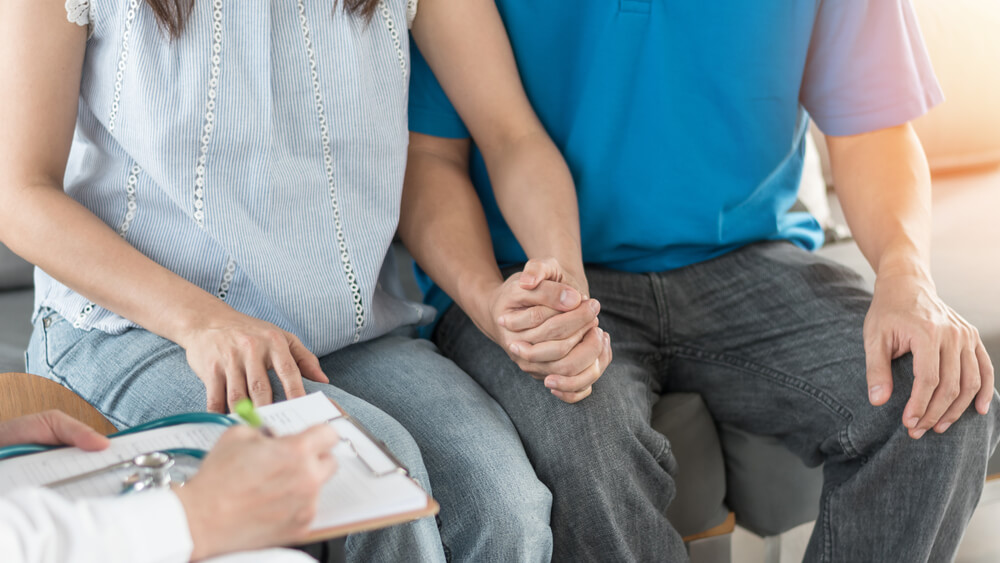Disclaimer: Please note that this blog is for educational purposes only, it includes general information on health-related topics. Women’s Healthcare of Boca Raton is giving medical advice to Patients Only. Follow this link to request an appointment with Dr. Ellman.
Chlamydia is a common and very treatable sexually transmitted infection (STI). It is transmitted when an already infected person has unprotected sex with someone. The transmission of the condition is also possible during oral, anal, or genital sex. Chlamydia usually doesn’t have immediate symptoms and can go undetected for months. That is why Women’s Healthcare recommends going for STD testing in Boca Ranton if there are any suspicions that a person is infected to start treatment as soon as possible.
Since chlamydia is caused by bacteria, it is easily treatable with antibiotics after it has been diagnosed via a cotton swab test. However, many people who were exposed to this bacteria usually don’t even know they have it until the first symptoms appear. What’s more, many people who might have caught it and got medical help may still be feeling chlamydia symptoms after treatment.
How Long Does Chlamydia Take to Show Up on a Test?
If you suspect that you may have chlamydia or show symptoms, you can visit your doctor for proper testing. There are several methods that the doctor may use to establish a diagnosis:
- Urine test: this method requires you to pee in a cup that is later sent off to a testing facility to see if bacteria is present in the urine.
- Blood test: your doctor will draw your blood and send it to a lab to see if there are antibodies to chlamydia present in your bloodstream.
- Cotton swab: your doctor will use a cotton swab to take a small sample of fluid or tissue that carries the infection, which is then tested for the presence of this bacteria.
Waiting for the results may be stressful, and the length of that wait depends on your specific health insurance plan, as well as the laboratory and test type:
- To test the urine for chlamydia, it takes about 2 to 5 days to show positive or negative results.
- Blood tests are the fastest tests, and the results come back in a few minutes if the lab has the analysis on-site. However, if the lab does not do the testing, it can take up to a week or more to get the results back.
- Cotton swab results also take about 2 to 3 days to show positive or negative results.
How Long Does Chlamydia Last?

Once chlamydia is diagnosed through a cotton swab test or any other, the treatment lasts for a week or longer, depending on how much bacteria is present.
However, most people who get infected with this bacteria have no symptoms, at least not at the beginning. Some people may never develop symptoms, while for some, it takes from one to three weeks for the first signs to occur after having unprotected sex with an infected partner. Below, you can find a detailed explanation of how long does chlamydia last and how long it takes to show up in different sexes and parts of the body.
How Long Does Chlamydia Last in Women?
When it comes to women, symptoms may take up to a few months to develop. Sometimes, there will be a sign of the infection after one to three weeks after exposure. However, women are more likely to have chlamydia but have no symptoms at all – asymptomatic chlamydia. According to research, up to 90% of women have asymptomatic chlamydia when compared to 70% of men.
What’s more, the incubation period of chlamydia depends on several factors which also determine the period of time for the symptoms to show up, including:
- The number of bacteria you were exposed to
- The part of the body where chlamydia entered (anus, genitals, throat, etc.)
- How quickly the bacteria reproduce
- How strong your immune system is.
How Long Does Chlamydia Last in Men?
When it comes to men, there is no significant difference in the incubation period. The factors that determine the incubation period are the same as for women. Also, a man will also experience symptoms, if any, after 7 to 21 days of being exposed to chlamydia.
The only difference between sexes when it comes to chlamydia are the very symptoms and how it manifests.
Can Chlamydia Be Dormant?
As already mentioned, chlamydia, like many other STDs and STIs, may not develop any symptoms that fast or at all. Even though people think that they would immediately notice that they have chlamydia, that is not always the case. This leads us to questions – can chlamydia be dormant and undetected?
Yes, chlamydia can be dormant and lie unnoticed for long periods of time. But, even if it is asymptomatic, tests can still detect it, so tests such as a cotton swab, blood tests, and regular checkups are important. More importantly, even when asymptomatic, it can still be passed to your partner, so tests and examinations are a must if you suspect anything.
Symptoms of Chlamydia

Even though the answer to the question “can chlamydia be dormant” is usually “yes,” many people still do develop symptoms after at least one week after exposure. That is why it is important to know the signs that you may have contracted chlamydia. Also, it is essential to remember that symptoms somewhat differ between women and men.
Symptoms in men:
- Pain during urination
- Abnormal discharge from the penis – clear or cloudy
- Unusual burning sensations and itchiness in the urethra
- Testicle pain
- Swelling around testicles from epididymitis
Symptoms in women:
- Pain during urination
- Abnormal discharge from the vagina – clear or cloudy
- Pain around the hips and in the abdomen
- Pain or unusual discomfort during sex
- Bleeding after sex
- Unusual and irregular bleeding when you are not on your period
- Pain around the rectum or anus
If you notice any of these symptoms, you should go for a checkup and test for chlamydia and other STDs and STIs. Chlamydia is highly treatable, and since it is a bacteria, you can get rid of it with antibiotics over the course of 7 days. However, there are sometimes people that are still feeling chlamydia symptoms after treatment and should go for another examination to see if more treatment is needed or if there are some other health issues, too.
Let’s Summarize
Chlamydia is a very common STI that can infect your throat, anus, or genitals after unprotected sex with an infected partner. It is a highly treatable infection and a week of antibiotics usually helps get rid of it. Chlamydia can be dormant, and it may take up to a month for the first symptoms to show up. Also, when you do have signs or suspect anything, you should go for a test to see if there is chlamydia present. And if you are still feeling chlamydia symptoms after treatment, talk to your doctor.
If you are concerned you have chlamydia or any other sexually transmitted disease or infection, book your appointment for examination and test as soon as possible.

Dr. Ellman is a Board Certified OBGYN who established his medical practice in South Florida over 25 years ago. His office, Women’s Healthcare of Boca Raton, is located in Boca Raton, Florida at West Boca Medical Center. Dr. Ellman attended Albert Einstein College of Medicine of Yeshiva University, where he received his medical degree. He went on to intern at Beth Israel Hospital in Boston- an affiliate of Harvard Medical School- and continued his residency at North Shore University Hospital in Manhasset, New York- an affiliate of Cornell Medical School.
Dr. Ellman has practiced Obstetrics and Gynecology in the Boca Raton area since 1995. In addition to treating patients at West Boca Hospital, Dr. Ellman also treats patients through his own private practice, Women’s Healthcare of Boca Raton, located on the West Boca Medical Campus.

